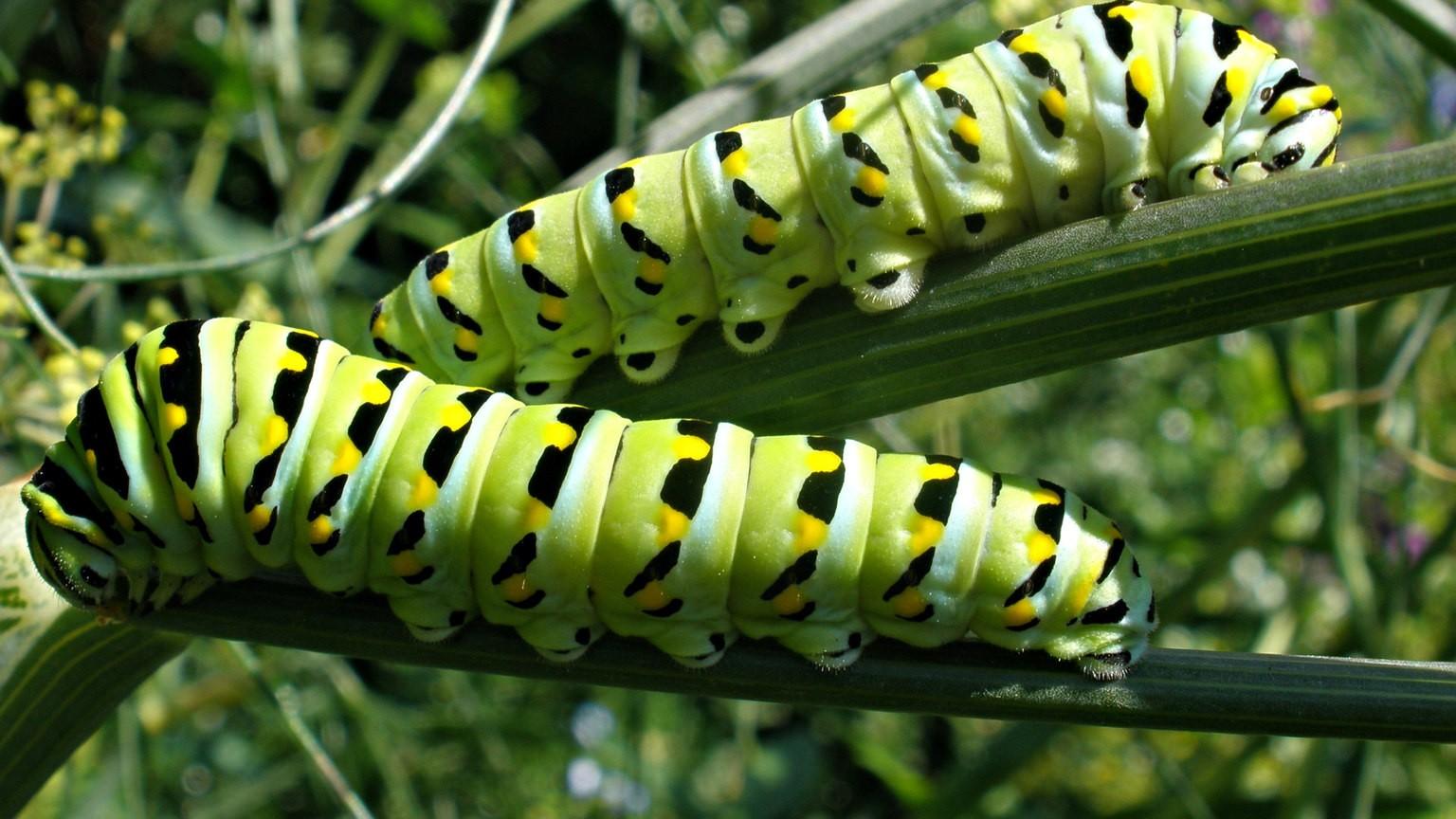Caterpillars are the larvae (immature stages) of butterflies and moths. Caterpillars have chewing mouthparts and consume the foliage of plants. Some may also produce webbing and roll leaves or tie leaves together and feed inside. Few caterpillars cause problems in flower gardens. If you do have a problem, pick the caterpillars off the plants and dispose of them. Some caterpillars that you may see include the woolly bear or salt marsh caterpillar or the saddleback. Both of these are very hairy and the saddleback has stinging spines, so wear gloves if you need to remove them.
Several butterfly larvae are common in the garden. These include the monarch, which feeds on Asclepias (milkweed) and the swallowtail (parsleyworm), which feeds on plants such as parsley, fennel, and Queen Anne's lace. If you see these or other butterfly larvae feeding on plants in your garden try to be tolerant and you will be rewarded with beautiful butterflies. Next season plant extra food for the butterflies. Asclepias is very tolerant of being defoliated and sprouts new growth quickly. Fennel is also very forgiving.

Monarch caterpillar feeding on swamp milkweed. Photo: Steven Katovich, Bugwood.org

Saddleback caterpillars (Do not touch with bare hands!) Photo: Robert L. Anderson, USDA Forest Service, Bugwood.org

Yellow woollybear caterpillar. Photo: University of Maryland Extension
